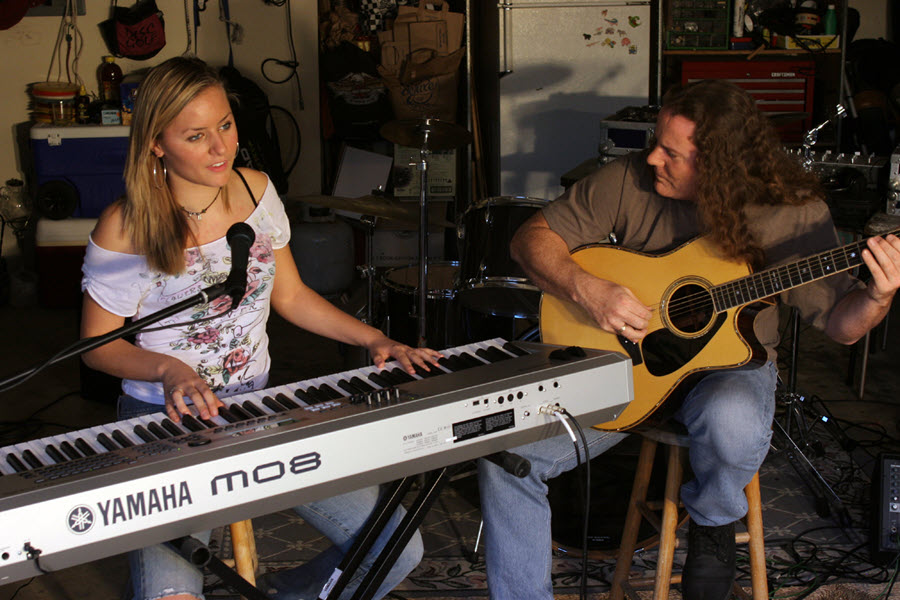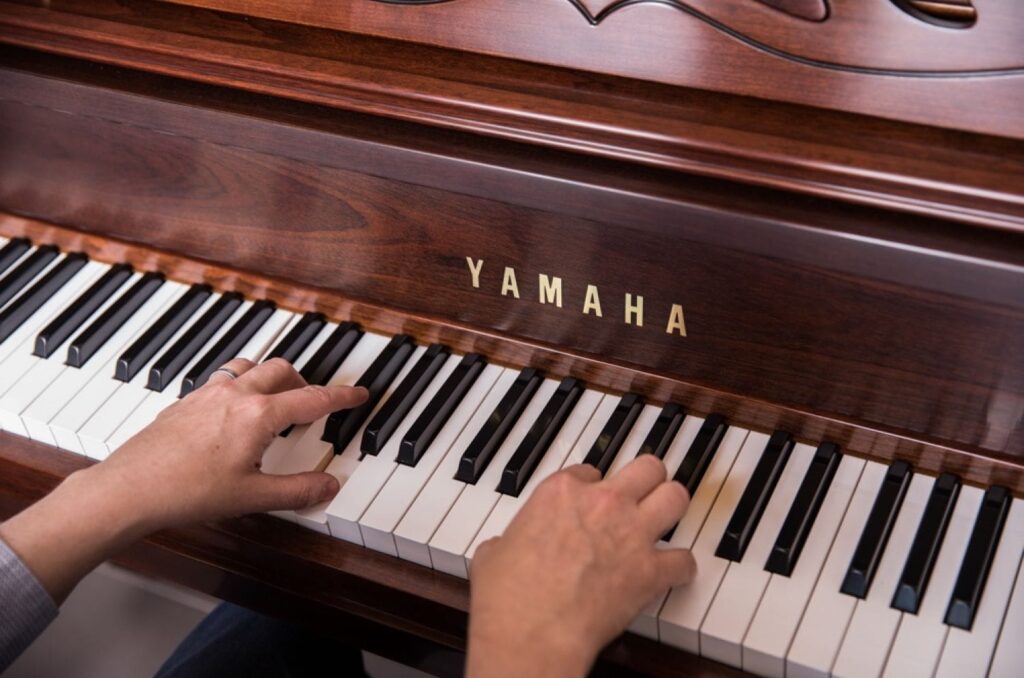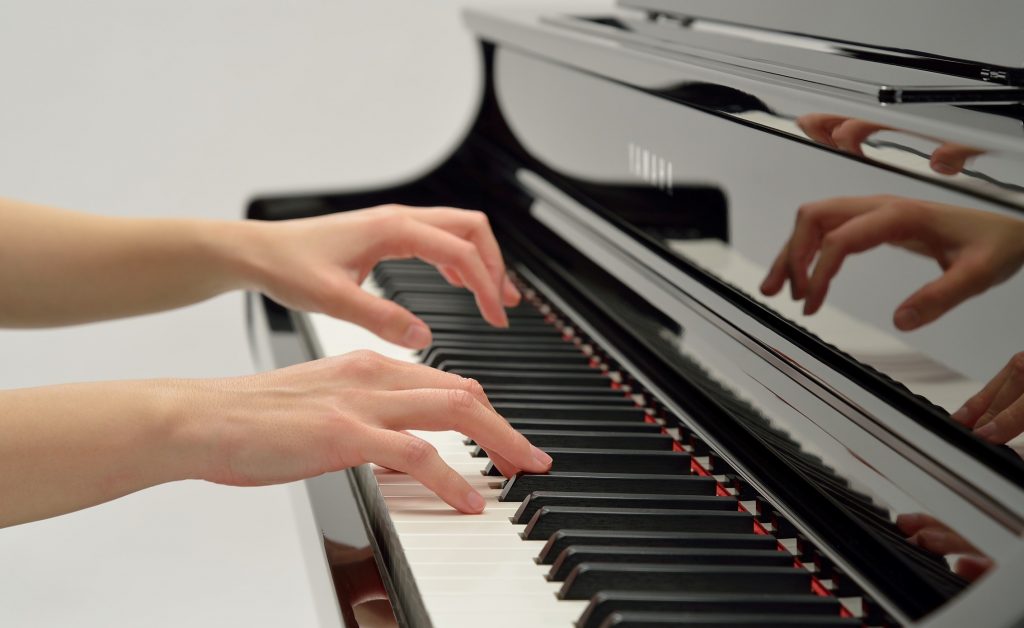Tagged Under:
Top 10 Piano and Digital Keyboard Practice Tips
Practicing is not performing — approach it with purpose for the best results.
It’s always fun to add a new song or piece of music to your repertoire. But to really learn a new piece of music, you need to take a focused and results-driven approach — and you also need to understand that true practice is much more than just playing something over and over again.
Here are 10 tips to help you work smarter, use your time efficiently and attain great results in record time.
1. Listen Before You Play
Whether it’s a classical composition, a pop or show tune or something else, hopefully there is a recording or video that first attracted you to it. With the score or sheet music in hand, listen to the piece a few times, following along with the music. This way, you know what it is supposed to sound like and can better interpret the written music as you start to work on it. If there are multiple performances available — even from different performers — so much the better. Listen for how they each treat the piece and decide which way(s) you like the best.
2. Warm Up
Just like any form of exercise, it’s important to stretch and warm up your muscles before every practice session. My very first Well-Rounded Keyboardist blog offered multiple tips for doing just that.
3. Avoid Distractions
You need to give your practice time your full focus, so before you sit down at your keyboard, silence your phone, turn off notifications on your computer/tablet and take necessary measures to forestall any other household activities that might interrupt and distract.
4. Read It Through
The first time you work on a new piece — even before you actually start to play the composition — you should read it carefully, paying attention to many things.
First, check the key signature so you know what sharps or flats you will need to be playing.
Next, familiarize yourself with its road map — in other words, the places where there are repeat signs, first or second endings and things like D.S., D.C. or Coda signs. (More information about these terms can be found here.)
You may also need to work out fingerings for any tricky or difficult passages. Best to do this right up front so you can be consistent in your performance and not instill any bad habits while practicing.
5. Slow It Down!
One of the most common mistakes players make when learning a new piece is playing it too fast. The temptation is to immediately play the music at the tempo it was recorded at, or intended to be, but don’t do it! Practice is a special task of digesting what is being asked of you, following the printed music, and training your fingers and your mind for what is required. Getting it right at a very slow tempo first is key. Then, when you’re ready, you can gradually increase the tempo in stages.
6. Break It Up
When you are first learning a piece, it’s best to break it up into smaller sections to work on. Most music has logical sections or phrases that you can use to decide these groupings, whether it’s the verse of a song or the repeating theme of a sonata. These could be as small as a few measures, or as long as a page or two, but they will inevitably be easier to learn than the whole tune.
As you work through a section, you may find an especially tricky phrase due to the fingering required, a large jump in range, or a difficult rhythm that has to be maintained between the hands. Stop and focus on those bits, even if they are only a few beats in duration. Repeat and drill those problem areas until they become comfortable, then go back to the longer phrase or section and integrate your newly mastered phrase back into the form.
And remember: Practicing is not performing. That means there’s no need to always start at the beginning and work your way through the entire piece. You’ll be freshest at the start of your practice session, and you don’t want to wait to encounter trickier sections later on, when you may be getting a little tired. My advice? Some days, start in the middle instead. It’s only when you have made significant progress with a piece that you should try to play it all the way through from start to finish.
7. Hands Alone
When you come to a difficult phrase, stop and work on each hand by itself a few times. This way, you can really pay attention to what you are doing. When you get comfortable with one hand, you can go back and put the two parts together. Combined with a slow tempo, this technique will help you master these trouble areas quickly so they become second nature.
8. Memorize It
The sooner you can stop looking at the music as you play, the better. Without the visual distraction of following the score, you can concentrate on what you’re doing, and what you’re hearing. I know this can be difficult for some (it’s my Achilles Heel for sure!), but the sooner you can get the piece memorized, the faster your progress will be.
9. Record Yourself
When you’re in the throes of playing, you already have a lot on your mind, making it hard to judge your progress. Recording yourself and then listening back gives you the focus and objectivity to really hear what is going on. Many digital pianos have a built-in recorder function, and most smartphones and tablets come with a memo recorder app that will do the trick. (No need to spend money on something fancy.) Recording your practice allows you to sit back and decide what’s working well and what needs more effort. It may even spur you to try a different approach altogether.
10. Be Consistent
Practicing daily — at the same time each day if possible — will deliver better results than trying to cram in longer sessions two or three times a week. Even if you’re busy, try to practice at least five times a week. You are training both your muscles and your mind to perform a task, and doing it often is key.
At each practice session, limit the time you spend on a new piece to 15-20 minutes, tops. Then get up for a few minutes and grab a drink of water (or do some other small task) before returning to your practice, mentally refreshed.
Check out our other Well-Rounded Keyboardist postings.
Click here for more information about Yamaha keyboard instruments.














